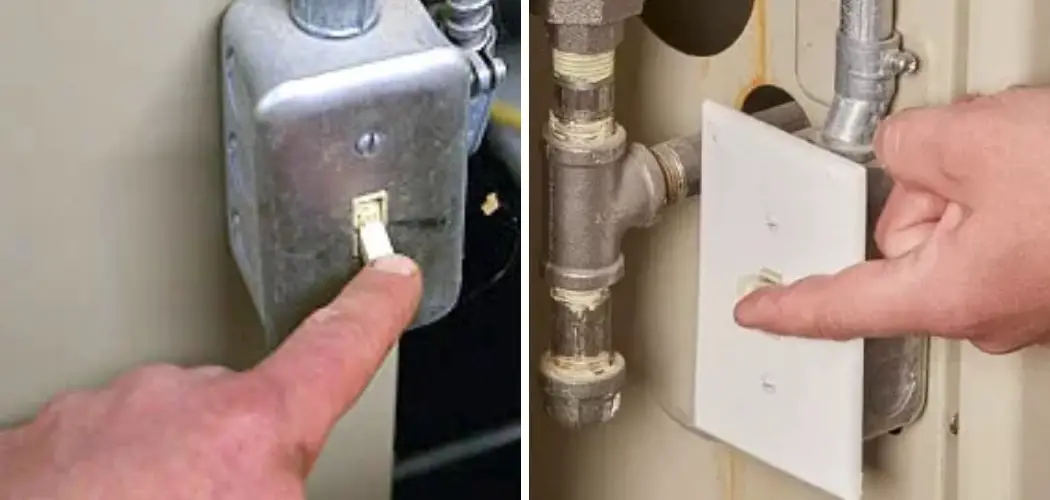Understanding how to properly shut off your furnace is a crucial aspect of home safety and maintenance. Whether you need to perform routine maintenance, make repairs, or respond to an emergency, being able to shut off your furnace is a fundamental skill for homeowners. In this article, we will delve into the essential steps and considerations of how to shut off furnace.
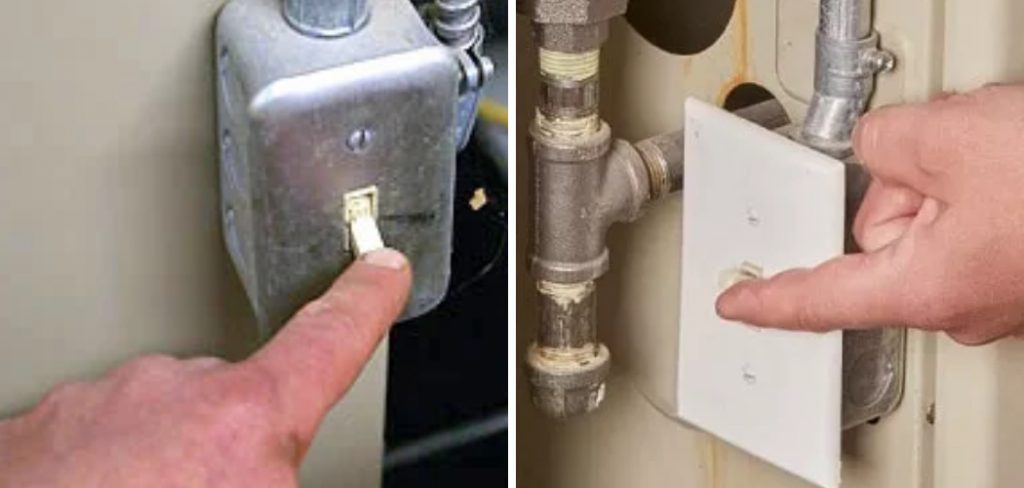
From locating the emergency shut-off switch to understanding the gas supply valve, this guide aims to equip homeowners with the knowledge to safely and effectively turn off their furnace when needed. Whether you’re a seasoned homeowner or a first-time furnace operator, mastering the art of shutting off your furnace ensures a safer home environment and allows for responsible furnace management.
Importance of Knowing to Shut Off a Furnace
Understanding how to shut off your furnace is not just about proper home maintenance; it’s a critical safety measure for every homeowner. A furnace, while essential for heating, poses significant risks if not properly managed. Gas leaks, overheating, or even fires can occur if a malfunctioning furnace is not turned off promptly.
Additionally, during certain repairs or maintenance tasks, shutting off the furnace is necessary to prevent accidents and ensure the safety of those performing the work. By knowing how to shut off your furnace, you are taking a proactive step in minimizing risks, protecting your property, and ensuring the well-being of your household.
Situations Requiring Furnace Shutdown
Several situations necessitate shutting down your furnace to maintain safety, efficiency, and functionality. These include:
- Routine Maintenance and Cleaning: To ensure your furnace operates efficiently, routine maintenance such as cleaning or replacing air filters should be performed with the system shut off to prevent injury or damage.
- Repairs: Whether addressing a specific malfunction or replacing parts, shutting off your furnace is a critical step to safely perform any repairs.
- Gas Leaks: If you suspect a gas leak, immediate furnace shutdown is imperative to prevent potential hazards, including explosions or fires.
- Overheating: Should your furnace overheat, turning it off can prevent damage to the system and reduce the risk of fire.
- Extended Absences: Shutting off your furnace during long periods of absence from home helps in conserving energy and reduces the risk of accidents happening in your absence.
Recognizing these situations and responding appropriately by shutting off your furnace is vital for your safety and the longevity of your heating system.
Emergency Shut-off Switch: Purpose and Function
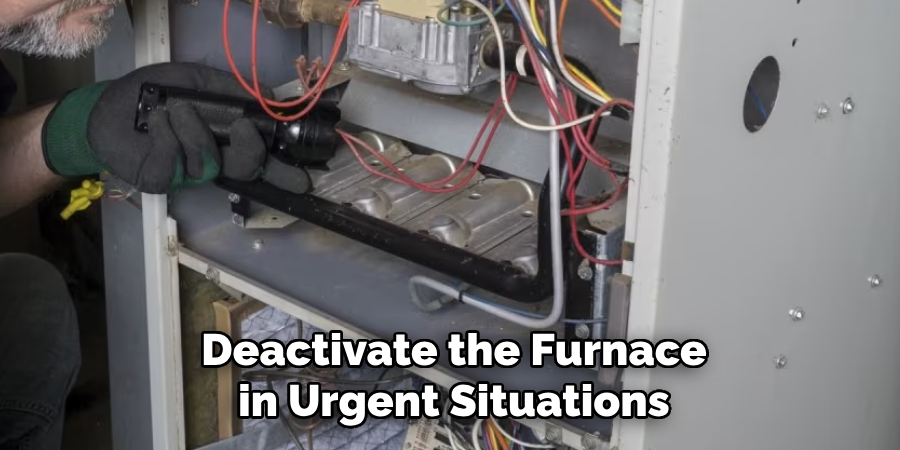
The emergency shut-off switch is a critical safety feature designed to allow homeowners and technicians quick and immediate access to deactivate the furnace in urgent situations. Positioned in a convenient and easily accessible location, typically near the furnace or at the top of the basement stairs, this switch enables the shutting down of the furnace without the need to access the main power panel or interact directly with the furnace itself.
The primary purpose of the emergency shut-off switch is to provide a swift means to turn off the furnace in cases of emergencies such as gas leaks, overheating, or before performing maintenance and repairs, thereby minimizing the risk of accidents and enhancing overall safety. Its function serves as a frontline defense in protecting your home and loved ones from potential hazards related to furnace operation.
Components of a Furnace System
Understanding the various components of your furnace system is essential for effective troubleshooting, maintenance, and when performing repairs. A typical furnace system comprises several key parts, each playing a vital role in heating your home. Here’s a brief overview of these components:
- Thermostat: The control unit for the furnace, it regulates the temperature by signaling the furnace to turn on or off based on the desired settings.
- Furnace Burners: These ignite to provide the heat that warms the air. In gas and oil furnaces, the burners are where fuel is combusted.
- Heat Exchanger: This crucial component separates combustion gases from the breathable air and transfers heat to the air that is circulated throughout the home.
- Blower Motor: Once the air is heated, the blower motor propels it through the ductwork and into the various rooms of the house.
- Air Filter: Positioned near the inlet where air enters the furnace, the air filter removes dust, allergens, and other particles from the air before heating and circulating it.
- Flue or Vent Pipe: A vital safety feature that expels exhaust gases, including carbon monoxide, outside of the home, ensuring the air inside remains safe to breathe.
- Gas Valve: Controls the flow of gas to the burners for combustion. It’s automatically regulated based on the thermostat’s demands.
A comprehensive understanding of these components and their function within the furnace system can greatly assist homeowners in recognizing signs of malfunction, performing routine maintenance, and discussing issues with professional technicians.
Importance of Proper Shutdown
Properly shutting down your furnace is not merely a step in routine home maintenance; it is an essential practice that ensures the safety and efficiency of your heating system. An improper shutdown can lead to numerous issues, including the risk of fire, gas leaks, and system damage. Ensuring the furnace is correctly turned off allows for safe maintenance and repairs, as well as the prevention of unnecessary energy consumption, especially during periods of non-use.
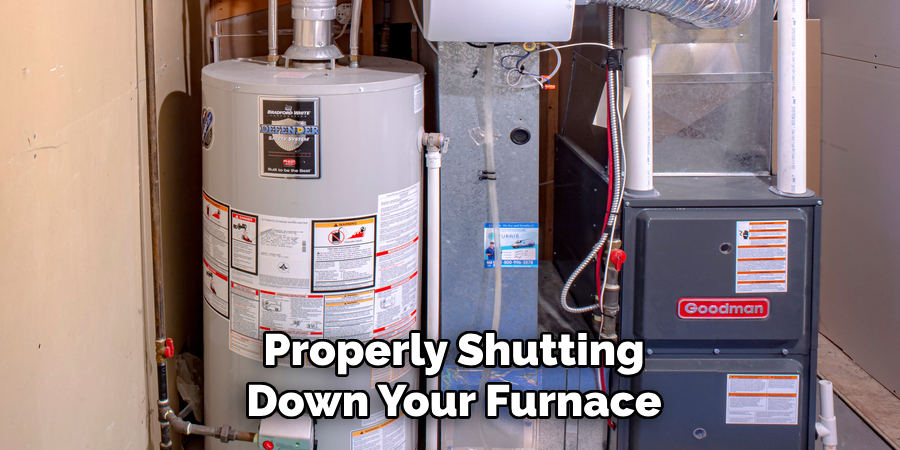
Furthermore, a proper shutdown sequence can prolong the lifespan of the furnace by reducing wear and tear on its components, thereby saving homeowners on costly repairs and replacements. Understanding and implementing the correct shutdown procedures is integral to maintaining a safe living environment and ensuring the longevity and reliability of your home’s heating system.
10 Methods How to Shut off Furnace
1. Locate the Emergency Shut-Off Switch:
The emergency shut-off switch is a vital component installed near the furnace. Find this switch, usually a red button or toggle, and flip it to the “Off” position. This immediate shut-off is crucial in emergency situations.
After locating the emergency shut-off switch, it is important to make sure that all occupants in the building are aware of its location and how to use it. In case of an emergency situation such as a fire or gas leak, every second counts and knowing how to quickly turn off the furnace can prevent potential disasters.
It is also important to regularly check and test the emergency shut-off switch to ensure it is functioning properly. This can be done by simply turning the switch off and on, making sure that the furnace shuts off each time.
2. Turn off the Thermostat:
Before shutting down the furnace, adjust your thermostat to the lowest temperature setting or turn it off completely. This prevents the furnace from receiving signals to heat the home while you’re working on it.
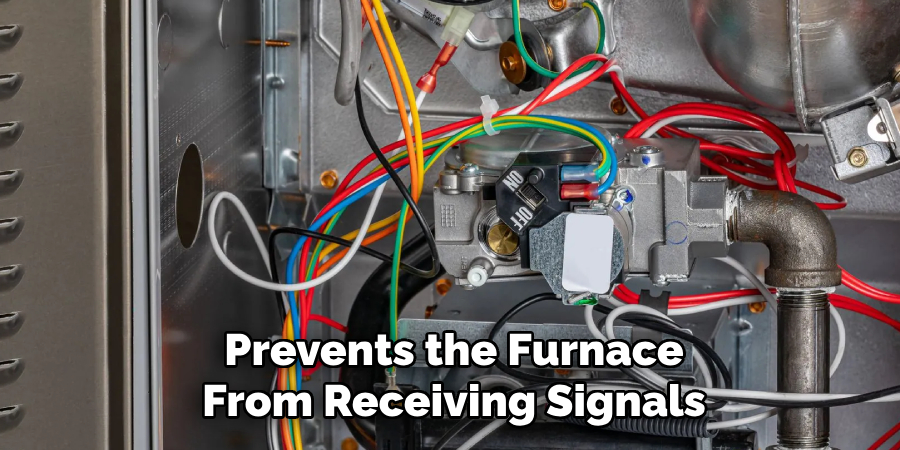
It is important to note that turning off your thermostat completely may be ideal for short periods of time, but it is not recommended for longer periods. This is because turning off your thermostat completely can cause the temperature inside your home to drop significantly, which can result in frozen pipes and other potential hazards.
Instead, consider setting your thermostat to a lower temperature during extended periods of absence. This will help conserve energy while also preventing any potential hazards from arising.
It is also important to regularly check and replace your thermostat batteries, as low batteries can cause malfunctions and uneven heating in your home.
3. Identify the Gas Supply Valve:
Locate the gas supply valve connected to your furnace. It is typically a lever or a round handle. Turn the valve perpendicular to the pipe to shut off the gas supply. If you’re unsure, consult your furnace’s manual or a professional for guidance. Remember that gas is highly flammable and should be handled with caution.
Gas supply valves are an essential safety feature in any gas-powered appliance, including furnaces. In the event of a malfunction or emergency, being able to quickly shut off the gas supply can prevent potentially dangerous situations.
It is important to know where your furnace’s gas supply valve is located and how to properly turn it off. If you are unsure or do not have access to your furnace’s manual, it is best to consult a professional for guidance.
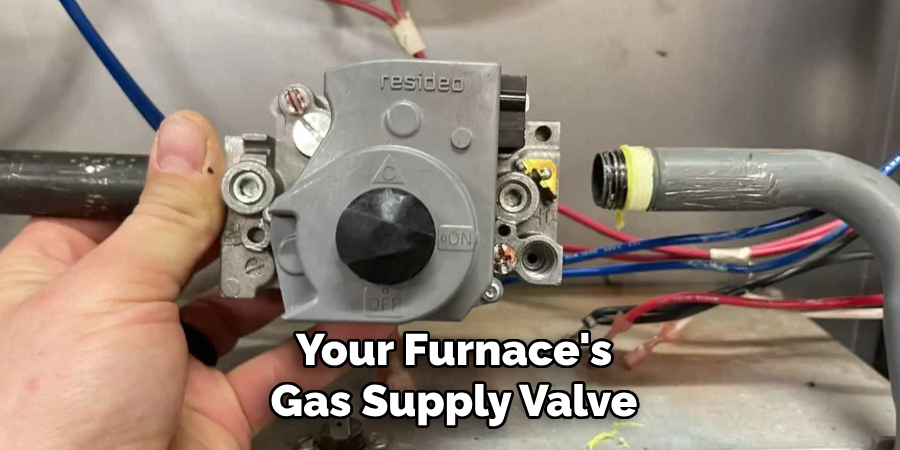
4. Switch off the Power Supply:
Find the power switch on or near the furnace unit and turn it off. Additionally, you may need to locate the circuit breaker labeled for the furnace in your electrical panel and switch it off for an extra layer of safety. After the power supply is switched off, you can proceed with safely working on your furnace.
At times, you may find yourself in a situation where your furnace needs to be repaired or maintained. In such cases, it’s important to turn off the power supply before starting any work. This will ensure that there are no electrical hazards and accidents while working on the furnace.
There are two main ways to switch off the power supply for your furnace: through the power switch located on or near the furnace unit, and by turning off the circuit breaker labeled for the furnace in your electrical panel. It is recommended to do both steps for added safety measures.
5. Shut off the Pilot Light (if applicable):
If your furnace has a pilot light, follow the manufacturer’s instructions to extinguish it. This step is particularly important if you’re working on components near the pilot light or if you’re shutting down the furnace for an extended period.
To shut off the pilot light, locate the gas valve and turn it to the “off” position. This will stop the flow of gas to the pilot light, ensuring that it does not ignite while you are working on the furnace. Make sure to wait a few minutes for any remaining gas in the line to dissipate before proceeding with your maintenance tasks.
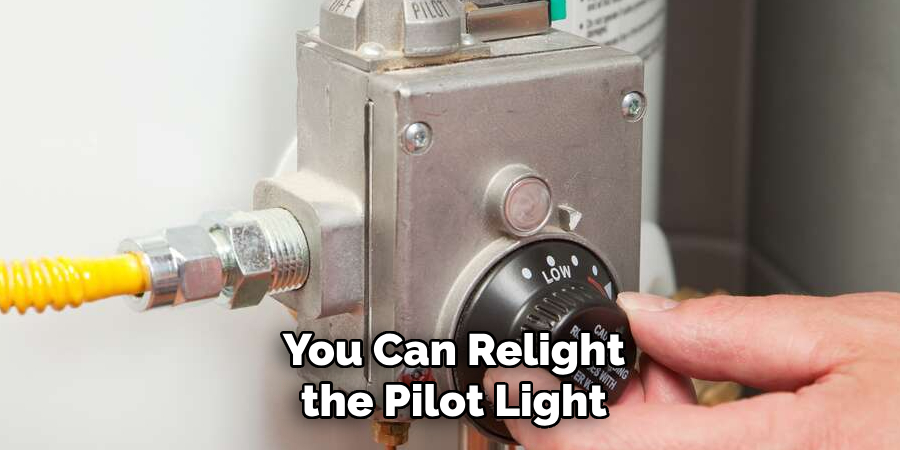
Once you have completed your maintenance tasks, you can relight the pilot light according to the manufacturer’s instructions. This will ensure that your furnace functions properly and safely.
6. Close the Furnace Gas Valve:
Some furnaces have a separate gas valve on the unit itself. Locate this valve and turn it off. This is an additional measure to ensure that no gas flows into the furnace during maintenance or repairs. It is important to close the gas valve as a safety precaution, especially if you are planning to work on the furnace’s internal components.
To close the gas valve, simply turn it in a clockwise direction. This will shut off the flow of gas to the furnace and prevent any accidental release of gas while you are working on it. Once you have completed your maintenance or repairs, remember to turn the gas valve back on before starting the furnace again.
7. Inspect and Shut Down the Burner:
Familiarize yourself with the furnace burner and its components. In some cases, there might be a dedicated switch or lever to turn off the burner. Follow the furnace’s manual for guidance on proper shutdown procedures.
After inspecting the burner and its components, it is important to know how to properly shut down the burner. This is crucial for safety reasons and to prevent any potential damage to the furnace.
Start by checking your furnace’s manual for specific instructions on how to shut down the burner. Each furnace may have different procedures, so it is important to follow the manufacturer’s guidelines. This will ensure that you are taking the proper steps and not causing any harm to the furnace.
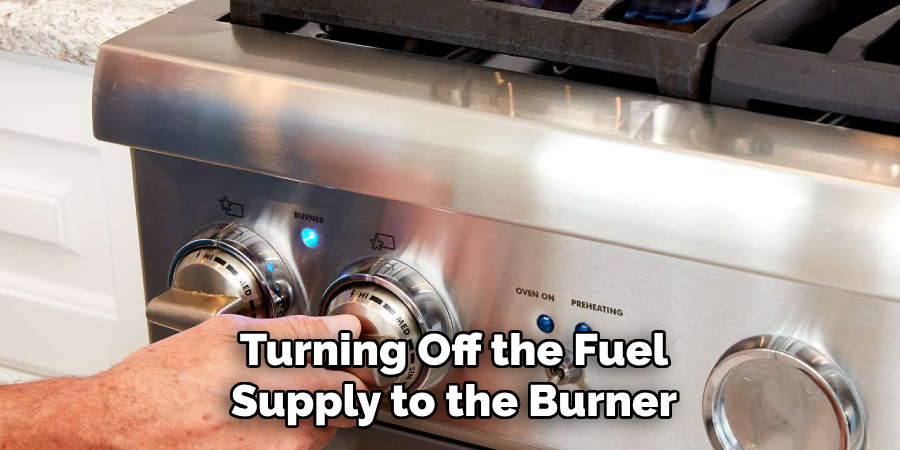
Once you have familiarized yourself with the shutdown procedures, start by turning off the fuel supply to the burner. This can usually be done through a dedicated switch or lever. Make sure to turn it completely off and not just on standby mode.
8. Disconnect the Power Cord (if applicable):
If your furnace has a power cord, unplug it from the electrical outlet. This step adds an extra layer of safety, preventing any accidental starts while you’re working on the furnace.
It is important to note that not all furnaces have a power cord, as some are directly wired into the electrical system. In this case, it is recommended to shut off the circuit breaker or remove the fuse for the furnace before proceeding with any maintenance or repairs.
Once you have disconnected the power source, wait at least 5 minutes before continuing. This will allow the furnace to cool down and any residual electricity to dissipate, reducing the risk of electrical shocks.
9. Close Vent Dampers:
Closing the vent dampers ensures that no heated air is distributed throughout the house during furnace maintenance. Adjust the dampers to the closed position to redirect the airflow. This will also prevent any debris or dust from entering the ductwork during maintenance.
Additionally, closing the vent dampers can help improve energy efficiency. By preventing heated air from escaping through open dampers, less energy is required to maintain a comfortable temperature in the house. This can lead to cost savings on utility bills.
It is important to note that not all houses have vent dampers, and it is best to consult a professional if you are unsure about how to properly close them. Improperly closing or adjusting vent dampers can cause damage to the furnace and affect its performance.
10. Consult Professional Assistance:
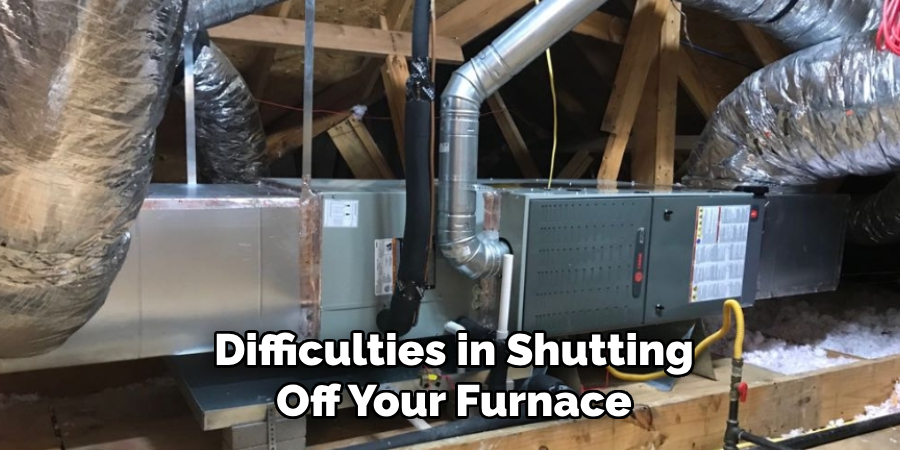
If you are uncertain about any step or encounter difficulties in shutting off your furnace, don’t hesitate to seek professional assistance. An HVAC technician can provide guidance and perform the necessary shut-off procedures safely. They can also inspect your furnace and make any necessary repairs to ensure it is in good working condition for the next winter season. Additionally, they can offer valuable tips on how to properly maintain your furnace to extend its lifespan and optimize its performance.
It is important to note that attempting to shut off or repair a furnace without proper knowledge and experience can be dangerous and may cause further damage. Therefore, it is always recommended to seek professional help for complex tasks such as furnace shut-off procedures.
Some HVAC companies also offer annual maintenance services for furnaces, which can include a thorough inspection, cleaning, and tune-up to keep your furnace running efficiently. This can not only save you from potential breakdowns during the winter season but also help lower your energy bills.
Conclusion
In conclusion, understanding how to shut off a furnace is a critical aspect of home safety and maintenance. Whether addressing emergencies, conducting repairs, or performing routine maintenance, knowing the proper shutdown procedures can prevent accidents and ensure the well-being of occupants.
By locating and familiarizing themselves with the emergency shut off switch, homeowners can quickly and safely deactivate the furnace in urgent situations. Emphasizing safety precautions, such as turning off the gas supply and following manufacturer guidelines, is essential to mitigate risks associated with furnace shutdowns. Thanks for reading, and we hope this has given you some inspiration on how to shut off furnace!

